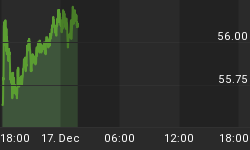
![]() Larger Image - Source: www.sharelynx.com
Larger Image - Source: www.sharelynx.com
Overlooked amongst all of the talk about the "fiscal cliff" is the looming debt ceiling. While the collision course to come to an agreement on the "fiscal cliff" would have a negative impact on the US (and world) economy, failure to come to an agreement to raise the debt ceiling could in theory push the US into bankruptcy.
The battles between the Republican led Congress and former US President Bill Clinton over the debt ceiling in the 1990's were almost legendary. Yet for all of those battles the actual increase in the debt ceiling under Clinton was low compared to his two Republican predecessors Ronald Reagan and George Bush 1. Under George Bush II, the debt ceiling was raised 7 times from about $6 trillion to almost $12 trillion. Since then the debt ceiling has gone up another three times and now stands at $16.394 trillion.
Under George Bush II the debt ceiling rose with little fanfare but since the election of Republican congress in 2010 debt ceiling battles have been normal. Given the US adds roughly $1 trillion of new debt every year primarily because of the needs that arose out of the 2008 financial collapse the next increase could take the debt ceiling over $17 trillion. US Treasury Secretary Tim Geithner has suggested that the debt ceiling have no limit. Given the polarization between the Republican led congress and the Democrat White House the odds of that happening appear to be extremely low.
Failure to increase the debt ceiling in a timely manner could result in the government being unable to pay its bills including the interest on the debt. Failure to pay interest on the debt and or meet a bond or bill rollover could put the US in default triggering in a bankruptcy. While that appears to be remote congress and the White House remain firmly on a collision course as each presents its differing plans to resolve the "fiscal cliff". The debt ceiling is hardly garnering any attention but if the debt ceiling is not increased in a timely manner the impact of it could be more immediate then the "fiscal cliff". The "fiscal cliff" is hyperbole as the effects of failure to reach a deal would only be felt over time and not immediately.
But like the "fiscal cliff" a resolution must be found or the unintended consequences could be worse than failure to reach an agreement on the "fiscal cliff". In the polarized world that is currently the US an agreement is not a given as each will manoeuvre to blame the other for any unintended consequences.
The collision course of the "fiscal cliff" and the debt ceiling are ironically playing themselves out against the backdrop of the end of the Mayan calendar. This is not to suggest that the end of the Mayan calendar on December 21, 2012 leads to the end of the world but failure to reach agreement on the "fiscal cliff" and the debt ceiling may feel like it.
The collision course over the "fiscal cliff" and the debt ceiling is not the only collision course currently underway. Some are suggesting that the Assad government in Syria is preparing to use chemical weapons against the rebels. If that is correct than it could set a collision course for the Assad government and NATO. The current clashes in Egypt are another potential collision course as pro Morsi supporters and opponents battle it out on the streets of Cairo. The military has stepped in but Egypt could in a worst case descend into civil war. Finally the recent success in Palestine receiving recognition at the UN has triggered reprisals from Israel including cutting off the sending of tax receipts and announcing further expansion of settlements that could divide up the West Bank further. The Palestinian/Israeli collision course has been ongoing since 1948.
Given all of these collision courses, maybe the Mayans are right.















